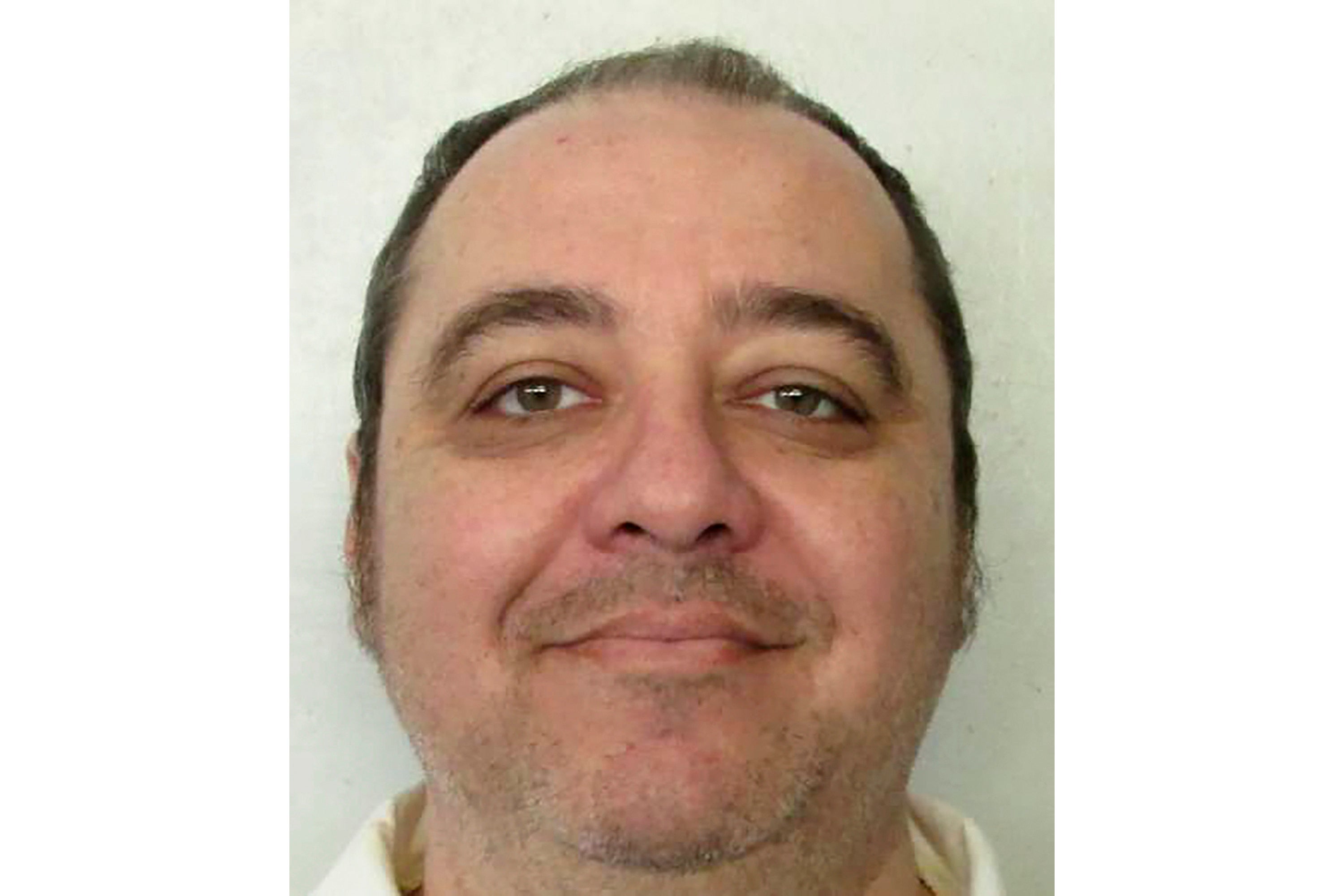What we know about Carey Dale Grayson, the Alabama inmate set to die by nitrogen gas
Grayson’s three accomplices managed to escape execution because they were under 18 at the time of Deblieux’s murder
A man convicted for the brutal slaying of hitchhiker Vickie Lynn Deblieux in 1994 is scheduled to be executed with nitrogen gas by the state of Alabama on Thursday.
Carey Daley Grayson, 49, was 19 when he and three others tortured, beat, and mutilated Deblieux, 37, on February 21, 1994.
If Grayson is executed Thursday, he will be the 22nd inmate to be put to death this year, and Alabama's sixth this year and third in two months, according to the Montgomery Advertiser.
What led Grayson and the other teens to target and murder Deblieux, and why are some anti-death penalty advocates protesting the method the state will use to kill him?

The Crime
On February 21, 1994, Deblieux was dropped off by her friend in Chattanooga near Interstate 59, where she began hitchhiking to continue her trip southwest, according to USA TODAY.
At the same time, Grayson and three other teens were driving near Birmingham, Alabama, and spotted Deblieux on the side of the road looking for a ride.
The group stopped for Deblieux and invited her to ride with them. They then drove to nearby wooded area of Bald Mountain — and reportedly justified the stop by telling Deblieux they were swapping out vehicles — where they began attacking her.
The teens beat and kicked her outside of the car before Grayson and another teen ultimately killed her by standing on her throat.
The group threw her body from a cliff, and later returned to the area to mutilate her corpse. They cut the woman's body at least 180 times, cut off her fingers, and removed a portion of her lungs, court records show.
Prosecution
Investigators became aware of Deblieux's death rock climbers stumbled across her remains near Bald Mountain four days after the attack had taken place.
Police began investigating the teens after they received a report that one of them had shown Deblieux's finger to a friend.
They later learned that Grayson's girlfriend at the time had found and him and his friends sleeping in a truck in Birmingham the night after they mutilated Deblieux's corpse. She recalled them being covered in mud and blood, but Grayson lied and said the blood had come from a dog.
All four of the teens involved — Grayson, Kenny Loggins, Trace Duncan, and Louis Mangione — were charged with capital murder, convicted, and sentenced to death.
Duncan, Loggins, and Mangione had their death sentences commuted in 2005 after the Supreme Court banned the execution of anyone younger than 18 when a crime was committed. The trio were instead sentenced life in prison without the possibility of parole.
Loggins has since attempted to have his sentence reduced further, arguing that it is unconstitutional to sentence someone to prison for life for a crime they committed before they turned 18, but his argument was rejected by the courts.
Grayson was 19 at the time of the murder, so his sentence was not commuted.
Execution
Alabama is scheduled to execute Grayson at 6 p.m. local time. Grayson is currently being held at Holman Correctional Facility — a little over 60 miles northeast of Mobile — where the sentence will be carried out.
In Alabama, inmates can choose to die by either nitrogen hypoxia, lethal injection or electrocution, with Grayson selecting the former. The controversial method was only used for the first time this year, when Alabama executed Kenneth Eugene Smith in January.

The unusual method of Smith’s execution sparked international backlash, including a protest from the Vatican.
Grayson is one of about 30 inmates on Alabama’s death row who have selected to die by nitrogen hypoxia. During the execution, the condemned person breathes in pure nitrogen through a mask, displacing the oxygen in their system. Proponents claim it is an instant and painless death, opponents claim it is untried and amounts to torture.
During Smith’s execution, he reportedly writhed and convulsed on a gurney for at least four minutes, rather than losing consciousness "within seconds," as the state had previously predicted.
Despite those issues, the state's Department of Corrections Commissioner John Hamm defended the execution as "textbook."
Grayson’s last chance to avoid death is to obtain a reprieve from the US Supreme Court and Republican Governor Kay Ivey.
However, when the Montgomery Advertiser pointed out to Ivey that Grayson was going to be executed the week before Thanksgiving, she showed little sympathy for the inmate.
"Did Carey Grayson give any consideration to the fact that he robbed Vicki DeBlieux and her family of now 30 Thanksgivings?" she replied.
Grayson suffers from bipolar disorder and a forensic psychologist testified during his trial that he was in a "manic state" during the murder.
The psychologist also noted, however, that Grayson had the capacity to differentiate between right and wrong in that moment, and that his actions cannot be dismissed based on his mental health struggles.

